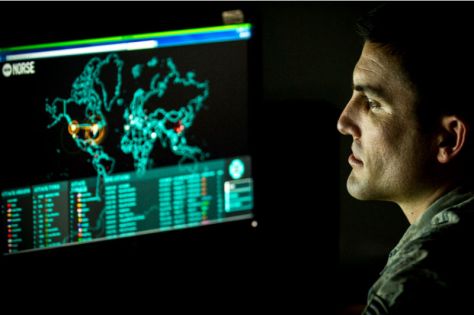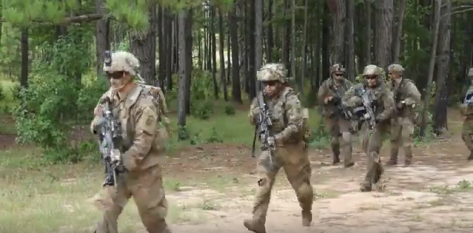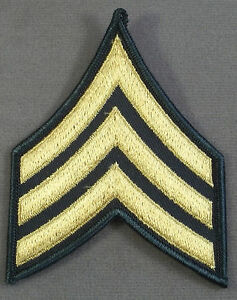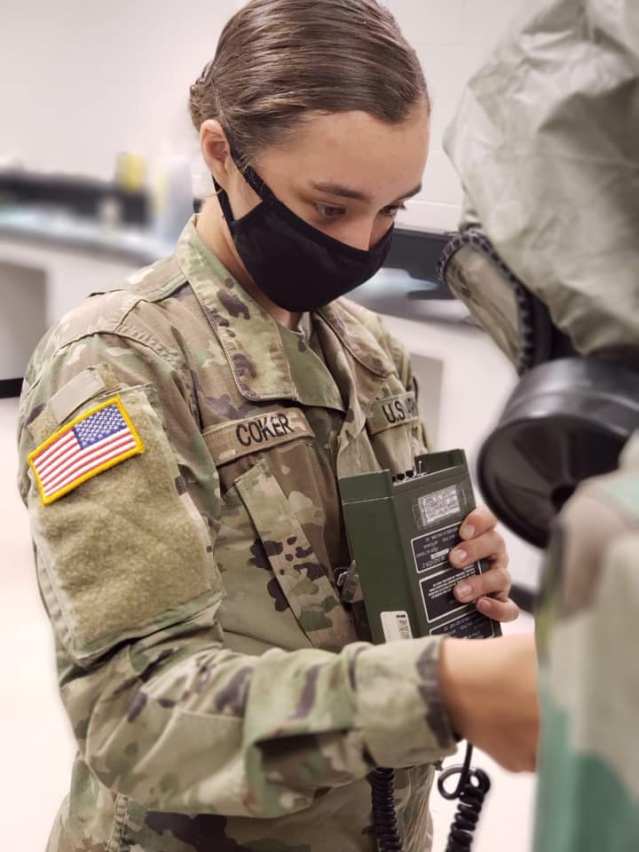This was originally published in The Belle Banner, Belle Missouri, on October 23rd 2019
If you are familiar with the terms, HTML, Javascript, SQL, PHP, Perl, C, C++, Python, Ruby, Java, Lisp, and Assembly Language, or maybe you are not familiar with those terms, but would like to get into computer science, engineering, or technology at a fairly high level, and you don’t want to spend four years in college just to get a beginner job, this is something you may want to consider. Basic computer operation is the electronic storing of information by the presence of ones and zeros, something is there or it is not, but the technology has and is still advancing on a level almost incomprehensible to most of us. The Army needs computer hackers, and it is creating them.

From the end of World War II until a couple years ago, the military was turtle slow in making any change or in obtaining new things. The Army is filled with really smart, good people, and its leadership the past few years has turned around that slow process mentality. Cyber war is here – now. The United States started creating cyber operations units 10 years ago, and has since been cyber attacked by foreign countries and we have conducted our own offensive operations. Two years ago, the Department of Defense created the United States Cyber Command. It is an independent four star unified command collocated with the National Security Agency (NSA). Its’ commander is also the Director of the NSA. Its official mission statement is; To direct, synchronize, and coordinate cyberspace planning and operations to defend and advance national interests in collaboration with domestic and international partners. In other words, not only stop hacking attempts, but go on the offensive in cyberspace. The US Army Cyber Command, the US Army Intelligence and Security Command, the Navy Fleet Cyber Command, the Naval Network Warfare Command, the Air Force Cyber Command, and the Marine Corps Cyberspace Command all fall under the US Cyber Command.

In May 2018 I wrote about new Army MOS’s (Military Occupational Specialties) 17C Cyber Operations Specialist and 17E Electronic Warfare Specialist, and in April 2019 I posted it on lifeinthearmy.com. Things are changing – fast.
Around four years ago, the Army created MOS (Military Occupational Specialty) 17C – Cyber Operations Specialist, and up until a couple years ago only active duty soldiers in the ranks of Specialist through Master Sergeant, could apply for that MOS. They had to have a Top Secret security clearance and be very computer savvy. For the past couple years, the Army has been recruiting enlistees for MOS 17C.
If you are in high school or already out and a computer junky, and not yet reached the age of 34, but college is not in your immediate future, consider enlisting for this MOS. It requires a five year enlistment, it also requires a Top Secret security clearance, which means your background must be squeaky clean, minus a minor traffic ticket.
First, for any job in the Army, is basic combat training (BCT). BCT is the most radical environmental change many young people will experience. No telephone, no access to telephones until after a few weeks. Communication with family and friends is by letter. It is 10 weeks long, it is physically hard, stressful, and in the words of many graduates, a lot of fun and a great experience.
17C candidates attend Phase I, which is the six month long Navy Joint Cyber Analysis Course (JCAC) at Corry Station (Pensacola), Florida. After JCAC the 17C candidate then attends Phase II, a 20 week Army Cyber Operations Specialist Course at Fort Gordon, Georgia. JCAC is attended by all services, then like the Army, the Air Force and the Marines teach their own courses. The Army Digital Defense Service hired an outside firm, General Assembly, which is a worldwide high tech education company that, much like the Army, teaches basic, corps technology – no electives or ‘nice to have’ classes, to set up and conduct the Army’s own Phase I 17C course. The pilot course, with 10 students, ran from January to April 2019, twelve weeks, not six months. Those 10 were placed alongside JCAC graduates for Phase II, with no noticeable difference in knowledge or performance. The plan was for 17C AIT to be about six months long and all at Fort Gordon. Apparently that didn’t work, or COVID-19 interfered, because Phase I is still listed as JCAC at Pensacola.

In October 2019, there was a ground breaking ceremony on Fort Gordon to construct a new ultra-modern cyber training facility. Some buildings will be demolished, four new constructed and seven renovated. The first facility will be a classified building, that is scheduled to open in fiscal year 2022. The Commanding General of the Cyber Center at Fort Gordon said; “The networks that go into it will allow us to do training at a level that is just far and above what we do today, and in a domain that is so dynamic like cyber, being able to train in that environment is absolutely critical.”
As far as security is concerned, this job is on a level above that of special operations. There is no enlistment bonus for this MOS. Everything about it is Top Secret. Who enlists for 17C, who is in training, and who is in the operational units is classified. So, the Specialist or Sergeant 17C does not get to come home and tell what he or she does in the Army. These are cyberspace shadow warriors. Some 17C assignments qualify for up to $300 per month special pay. Promotion to Sergeant is very fast. Very good operators are making Sergeant in 24 to 30 months.

University of West Florida grants 30 semester hours toward a bachelor’s degree in computer science to graduates of JCAC. Universities and colleges represented at Fort Gordon have not yet advertised the credit they give for the 17C AIT course, because it is new, but I would expect about the same credits. Enlist for five years for 17C, and by the time you are finished with training, you have a year of college. Anyone, in this job, should be able to complete their bachelors by the end of a five year enlistment.
At the end of that five years, the Army has been offering an $81,000 reenlistment bonus to Staff Sergeants who will reenlist for six more years, because the Army is competing with the civilian world that pays these people big salaries.
So, how does someone become an Army Cyberoperations Specialist? See an Army Recruiter. The Army Recruiters office in Rolla, Missouri has as professional a staff of Sergeants as you will find. The first question from a recruiter is, do you have a high school diploma, the second is, have you ever been in trouble with the law. When you tell the recruiter that you want to be a cyberoperations specialist, his normal process changes a little, he or she will want to know a lot about your background. The job requires a Top Secret clearance, be absolutely honest about everything. You will be given a practice ASVAB (Armed Services Vocational Aptitude Battery) test there in the recruiting office, if you score high enough then the conservation will turn to your background and high school. How much algebra did you take and how were your grades? Computer programming requires a logical thought process, like IF – THEN – ELSE, if this is present then that is the result, else another is the result, much like X + Y = Z. The ASVAB test requirements for MOS 17C are the highest for any MOS. The requirement is a score of 110 in General Technical (GT), which is comprised of tests in word knowledge, paragraph comprehension, and arithmetic reasoning, and a score of 112 in Skilled Technical (ST), which is comprised of also word knowledge and paragraph comprehension, plus general science, mechanical comprehension, and mathematics knowledge. To be competitive for this job, those scores should be in 120’s.
After an OPAT (Occupational Physical Assessment Test), background checks, and medical clearances to determine that you are qualified to enlist in the military, you go to MEPS (Military Enlistment Processing Station) in St Louis, where you take the ASVAB for record, contract for MOS 17C, and be sworn in to the Army. At that point, you sit down with a counselor and fill out SF Form 86, Application for (a Top Secret) Security Clearance. Print that form out back at home and fill it out by hand and take it with you to MEPS. It asks for a lot of information that you may not know. Whatever anyone tells you, do not fail to list everything and do not lie on that form – that is a felony. A Top Secret clearance usually takes about six months to complete, it helps if you haven’t moved around much. An investigator will interview you. You will be given a polygraph (lie detector) test. Investigators will interview your school teachers, your neighbors, your preacher, your co-workers, and the local Marshall and Sheriff. Once the investigation has started and the application looks OK, an Interim Top Secret may be awarded so the 17C candidate can start the course, but he or she cannot graduate until the final clearance has been awarded.
Soldiers in this job can obtain literally dozens of certifications from national and world wide computer technology and security organizations, including Certified Ethical Hacker (CEH) from the International Council of Commerce Consultants.
If this really interests you, this is could be a great opportunity.






















































































 Sample Joint Services Transcript
Sample Joint Services Transcript






